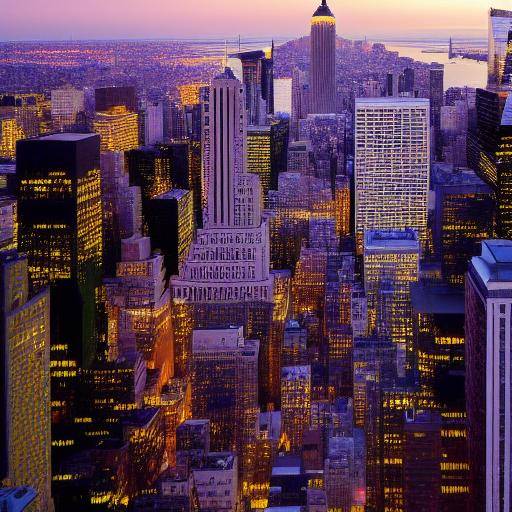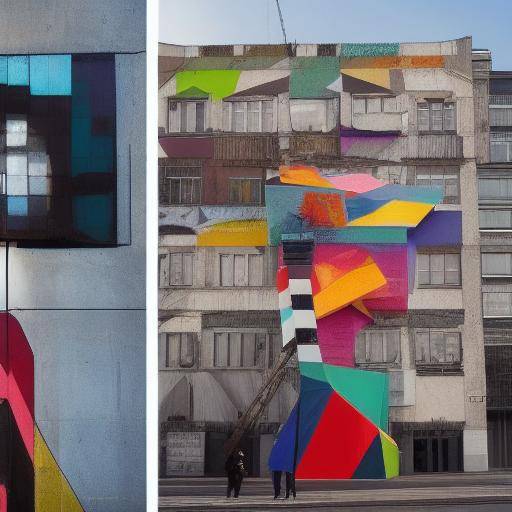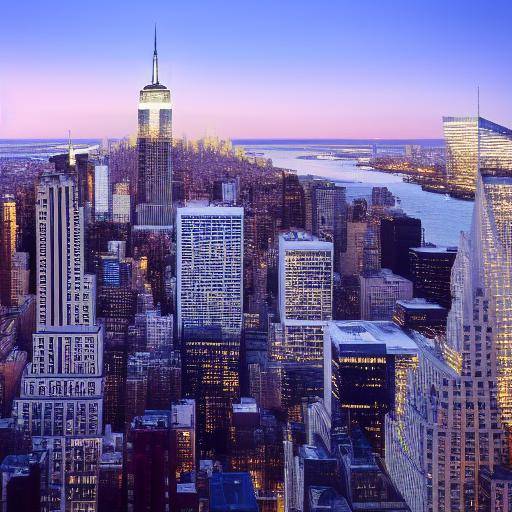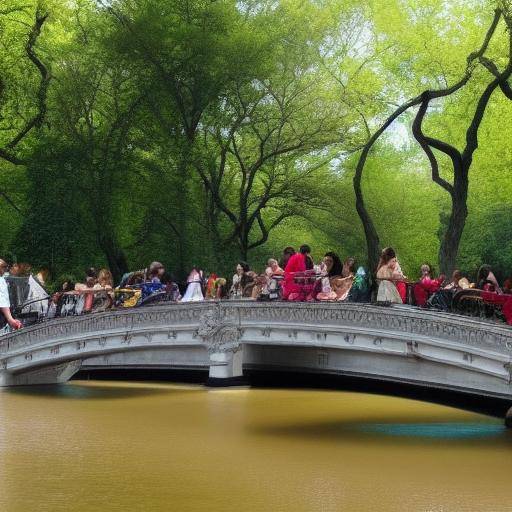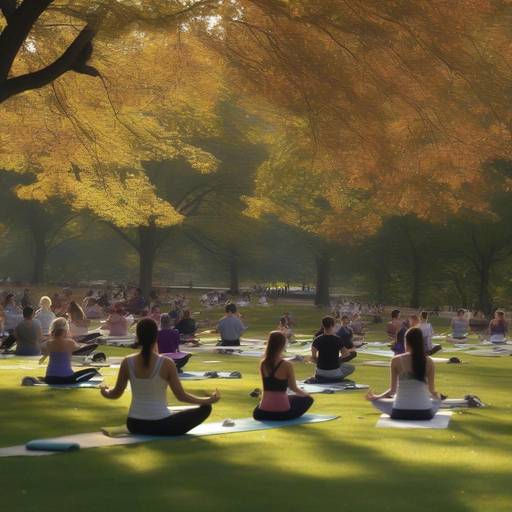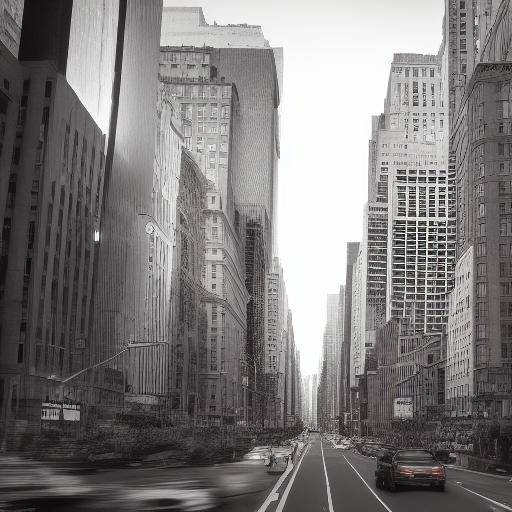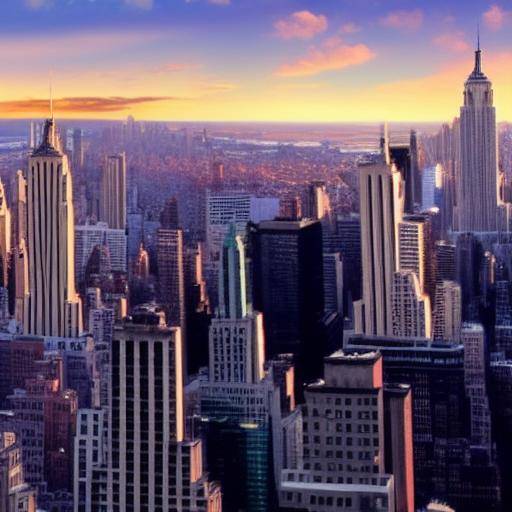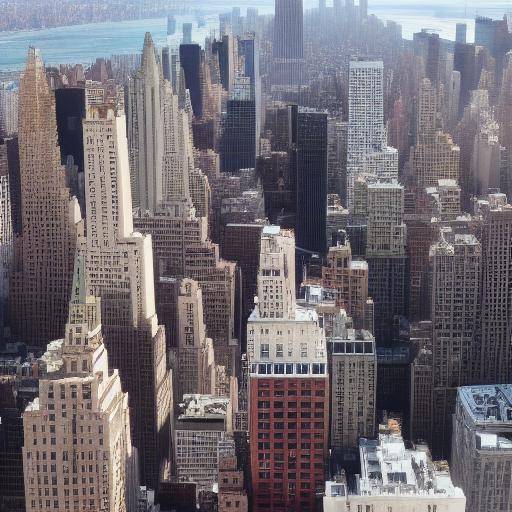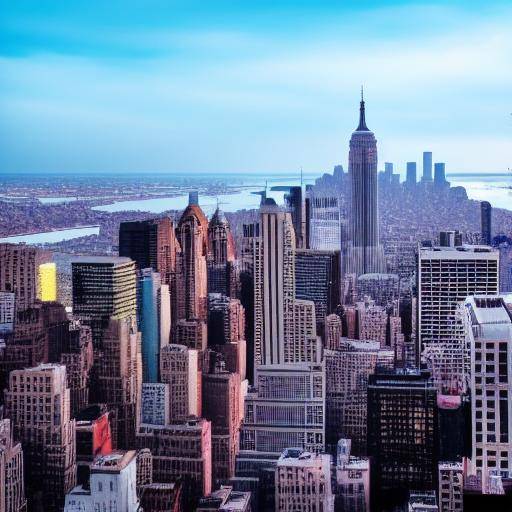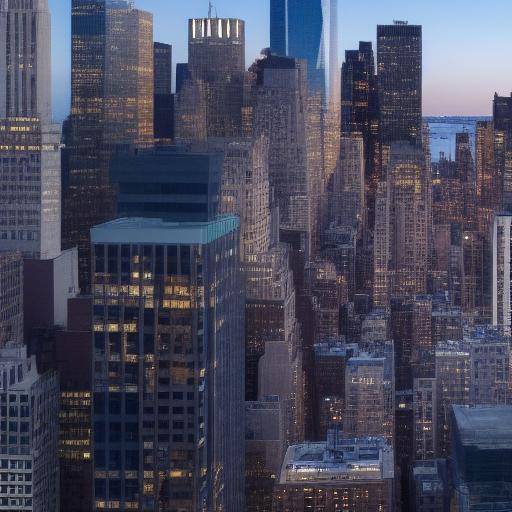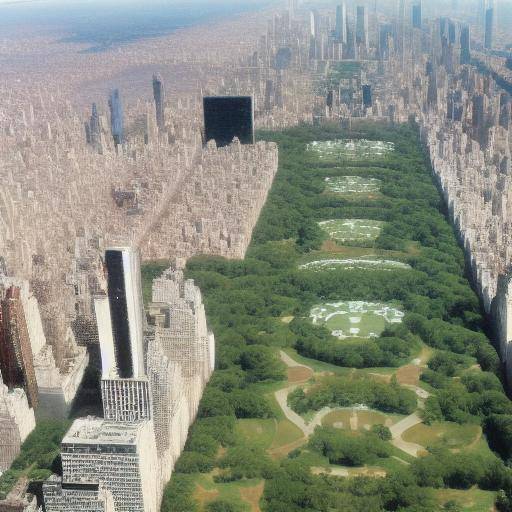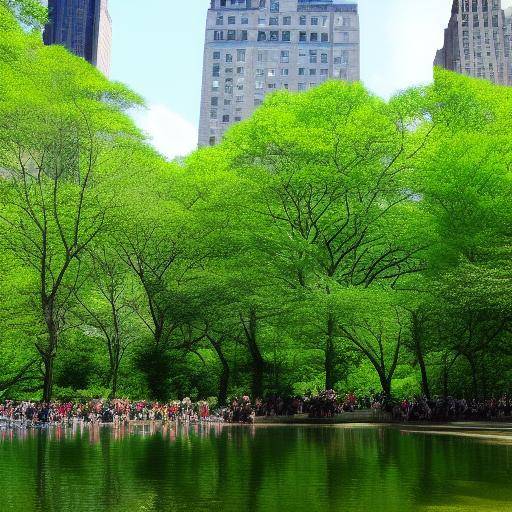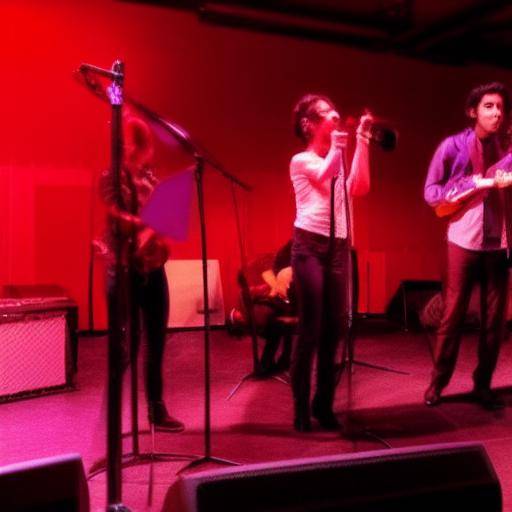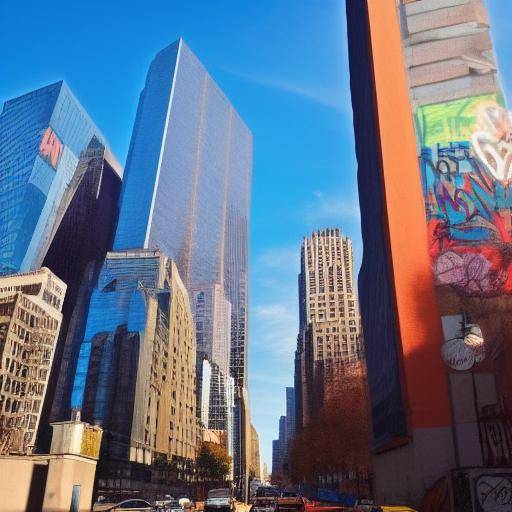
Street art, cultural and social expression, has become a vibrant reflection of the diversity, history and dynamism of New York City. The graffiti and murals adorn the streets, connecting New Yorkers with their urban environment. From vibrant colors to political and social messages, street art in New York tells stories that awaken curiosity and emotion.
In this article, we will explore the fascinating intersection between New York, street art and urban graffiti. From its historical evolution to contemporary trends, we will immerse ourselves in the shocking world of street art in the Great Apple. We will also examine its cultural relevance, its influence on society and the role it plays in the transformation of the urban landscape.
History and Evolution of Street Art in New York
Street art has its roots in the 1970s, when young New Yorkers began to put their messages on the walls of the city. Over time, urban graffiti became a form of artistic expression and a powerful tool to give voice to marginalized communities. New York's walls and trains became dynamic canvases reflecting urban realities.
In the 1980s, artists such as Keith Haring and Jean-Michel Basquiat brought street art to galleries and museums, consolidating its legitimacy as a form of art. This transition movement marked a significant change in the perception of graffiti, raising it to the world-renowned art status.
Today, street art in New York is an amalgamation of styles, from impressive murals that honor the cultural diversity of the city to bold political statements that challenge the established norms. This artistic legacy has turned the Great Apple into a creative beacon that attracts artists from around the world.
Urban graffiti has not only become a hallmark of New York identity, but has also evolved into more inclusive and collaborative forms, promoting social dialogue and individual expression. From the famous mural of "A rapist on your way" in the heart of Brooklyn to the street representations of the struggle for civil rights, street art in New York is a crucible of experiences and perspectives.
Deep Analysis: Challenges, Trends and Benefits of Street Art
Street art is not free of controversy and challenges. While many celebrate it as a legitimate form of artistic expression, others see it as vandalism or intrusion in public space. However, as street art has gained recognition and institutional support, a debate has emerged on its marketing and loss of authenticity.
Despite these challenges, street art continues to play a vital role in promoting diversity and inclusion in New York. Street murals such as the Bronx or the Lower East Side reflect the stories of marginalized communities and preserve their cultural heritage in a changing urban environment.
Current trends in street art in New York focus on community collaboration and participation. Local and global artists come together to create projects that not only embellish the urban landscape, but also foster a sense of belonging and empowerment in the community.
Comprehensive Review: Applications, Case Studies and Best Practices
The impact of street art goes beyond visual aesthetics. In the areas of gentrification, street art has served as a tool to preserve the identity of local communities and resist displacement. Reinterpretations of cultural icons, such as the Statue of Liberty in the Harlem district, have strengthened the link between the history of the city and its inhabitants.
The conservation practices of street art have also gained importance, as their value is recognized as cultural heritage. Now institutions such as the Queens County Art Museum and the Bronx Art Museum present exhibitions that celebrate the rich tradition of street art in New York, giving it the status of legitimate and relevant art.
In analysing best practices, it is clear that collaboration between artists, communities and government entities is essential to ensure the preservation and sustainability of street art in New York. These associations have led to educational programs that encourage the appreciation of street art and its social impact.
Comparative Analysis: New York, Street Art and Urban Grafiti
The relationship between New York, street art and urban graffiti is unique and multifaceted. The city itself serves as a canvas for a variety of artistic expressions, from intricate graffiti in abandoned buildings to monumental murals in emerging neighborhoods.
Unlike other metropolises, street art in New York reflects unprecedented cultural diversity, capturing the experiences of immigrants, ethnic minorities and LGBTQ+ communities. While in other cities street art may be marked by a dominant style, in New York there is an impressive range of styles, from social realism to abstract expressionism.
It is also interesting to note how urban graffiti in New York has influenced international artistic movements. New York artists such as Lady Pink and Daze have left imprints in cities around the world, sharing the vibrant and disruptive essence of New York street art with global audiences.
Practical Tips and Accessible Recommendations
If you ever visit New York, immerse yourself in the world of street art by exploring neighborhoods like Bushwick, Williamsburg and SoHo. Take advantage of the guided tours by local experts to discover the secrets behind the city's most emblematic murals and graffiti.
Participation in community street art projects or attendance at events such as the "Urban Art Festival" will allow you to experience first-hand the creative energy that defines street art in New York.
Industry Perspectives and Expert Reviews
According to major urban art experts, New York will remain a global epicenter of street art. As the city continues to evolve, street art will remain a visual testimony of its socio-economic transformations.
"The street art in New York is a constantly evolving dialogue between the city and its inhabitants", says the renowned urban art critic, María Martínez. "The impact of street art extends far beyond what we see on the streets; it is a reflection of the beliefs and values that shape the identity of New York."
Case Studies and Practical Applications in Real Life
A remarkable case study is the "Cities of the Future" project, which transformed the neglected public spaces of New York into outdoor galleries. This innovative approach not only embellished urban areas, but also encouraged the regeneration of slums in decline.
Another example is the "Art for Youth" project, which involves young people from disadvantaged communities in the creation of murals that represent their hopes and dreams. This initiative has demonstrated the power of street art to inspire and empower future generations.
Future Trends and Predictions
As New York adapts to the rapid evolution of its urban landscape, street art is expected to continue to play a pivotal role in defining its identity. The integration of street art into urban development projects, the focus on the preservation of artistic heritage and the momentum of community participation are trends that promise to shape the future of street art in the city.
With regard to urban graffiti, greater institutional recognition and greater collaboration between artists, local authorities and owners of public spaces are envisaged to promote the creation and conservation of significant works.
Conclusion
Street art in New York is not only an artistic expression, but a visual testimony of the diversity, history and struggles that make up the fabric of the city. From the Bronx to Brooklyn, the murals and graffiti serve as vivid reminders of the voices and hopes of a diverse and ever-changing community.
This article has explored in depth the dynamic relationship between New York, street art and urban graffiti. From its intriguing history to its future implications, we have unraveled the transforming power of street art in the Great Apple.
Street art continues to challenge borders and narratives, giving New York a unique visual language that celebrates authenticity and human connection. Looking towards the future, it is essential to preserve and promote this form of artistic expression that encapsulates the very essence of the city.
FAQs
Why is New York such a prominent centre for street art?
New York has been a magnet for innovative artists due to its cultural diversity, rich history and urban dynamism. This unique combination has created an enabling environment for street art as a form of expression and activism.
How has the perception of street art evolved in New York over the years?
Initially seen as vandalism, street art has become recognized as a legitimate form of artistic expression, even being presented in galleries and museums. Its evolution has been a reflection of the cultural and social transformation of the city.
What impact does street art have on the New York community?
Street art enriches New York's cultural identity, promoting inclusion and individual expression. In addition, it has become a means of preserving the heritage of marginalized communities and resisting gentrifying displacement.
How does street art affect the revitalization of neglected urban areas?
Street art can contribute to the revitalization of neglected urban areas by providing a sense of identity and sense of community. The murals and graffiti can transform abandoned spaces, attracting both local residents and visitors.
What is the future of street art in New York?
The future of street art in New York is a constantly evolving dialogue between the city and its inhabitants. Further integration of street art is expected into urban development projects, as well as an approach to the preservation of artistic heritage and community participation.
Where can I find emblematic examples of street art in New York?
Neighborhoods like SoHo, Williamsburg, Bushwick and the Bronx are renowned for their vibrant street art scene. Likewise, guided tours by local experts offer the opportunity to discover emblematic murals and graffiti throughout the city.
Conclusion
Street art has transcended the streets to become a fundamental piece of the urban landscape of New York. From its humble beginnings as a manifestation of discontent to its evolution as a legitimate form of artistic expression, street art has forged a lasting legacy in the Great Apple.
In celebrating cultural diversity, promoting inclusion and preserving authenticity, street art in New York continues to challenge the conventions and captivating those who dare to look beyond the facades of the buildings. Ultimately, street art in New York not only offers a unique look at the city, but also invites to reflect on the narratives that shape its identity.
Street art in New York is much more than just paintings on the walls; it is a lively and energetic dialogue that reminds us of diversity, dynamism and the struggle for equality in this emblematic city. It will continue to be a catalyst for change, a voice for the marginalized and a lasting legacy that transcends the borders of time and space.
In short, street art in New York is not only an artistic expression, but a visual testimony of the diversity, history and struggles that make up the fabric of the city. From the Bronx to Brooklyn, the murals and graffiti serve as vivid reminders of the voices and hopes of a diverse and ever-changing community.
With its ability to transform the urban landscape and give voice to the marginalized, street art in New York will continue to play a crucial role in the narrative of the city and beyond. This article has explored in depth the dynamic relationship between New York, street art and urban graffiti, highlighting the transformative and essential role it plays in the Great Apple.

